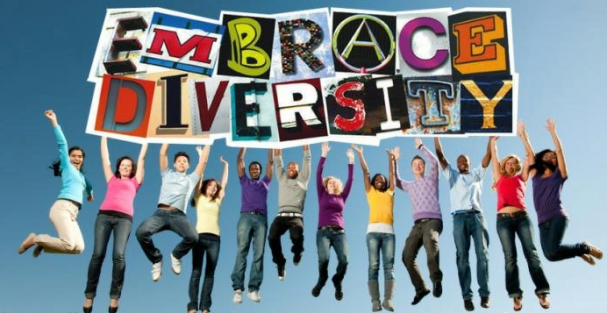Recently, I had the pleasure of being on a panel about media diversity at Bloomberg’s “Power of Difference Summit,” in Washington, D.C. Topics covered included a current look at diversity in journalism, why newsroom diversity is important, the value of having a diverse newsroom, how the media covered Ferguson and the Baltimore riots, along with some solutions.
The moderator was Toluse Olorunnipa, White House correspondent for Bloomberg News. My fellow panelists were Drew Berry, a professor at Hampton University’s Scripps Howard School of Journalism and the owner of Drew Berry & Associates LLC; Richard Fowler of “The Richard Fowler Show;” and Orlando Watson, communications director for black media at the Republican National Committee. Washington Post staff writer Vanessa Williams was unable to participate due to a late deadline.
A Manifesto for Change
It was a good discussion, but of course, we didn’t solve the problem. But on my way home, I saw an article from “This American Life’s” Stephanie Foo entitled “What To Do If Your Workplace Is Too White,” written on the Transom website. Stephanie’s manifesto addresses all the excuses and offers simple ways to override them. It should be required reading for everyone involved in building our workforce or programming. It’s a roadmap, it’s an action plan, it’s a manifesto.
I read it and found it had some really great ideas about how public radio can diversify, and there are lessons that other media outlets could learn.
“A diverse staff will lead you to a broader range of ideas. And new ideas bring new listeners. If you’re in storytelling or media, new, competitive, different ideas are the pillars your entire business rests on,” Foo writes. Simple right?
But then it went downhill. A person I admire greatly wrote about Foo’s post on social media, underlining the need for more diverse newsrooms (and this person is someone who has walked the walk in this area). But instead of a civil discussion, the thread devolved into the old arguments like why can’t we hire strictly on merit, why race continues to be dragged into the hiring discussion and even calling Foo racist for her headline that included using the word “white.”
The point is, statistics bear out that newsrooms have actually become less diverse. The RTDNA/Hofstra University Annual Survey for 2014 found that the minority workforce in TV news, at 22.4 percent, the highest it’s been in 13 years and the second-highest level ever. Still, as far as minorities are concerned, the bigger picture remains unchanged. In the last 24 years, the minority population in the U.S. has risen 11 points; but the minority workforce in TV news is up less than half that (4.6), and the minority workforce in radio is up 2.2.
And according to the American Society of News Editors, the percentage of minority journalists in daily-newspaper newsrooms remained relatively stable in 2014 at 12.76 percent even as newsroom employment declined by 10.4 percent. But the bad news is that the percentage of minority journalists has hovered between 12 and 14 percent for more than a decade, it added.
Problem Far from Solved
So despite the naysayers, the problem is still there. While there are companies like NBC Universal, BuzzTeed and First Look Media that are taking it seriously, the issue of media diversity is far from solved.
Diversity is not just about checking a box for the black, the female, the Hispanic, the Asian or the LGBT person in your newsroom. Ongoing demographic changes that show the white, male audience that media companies continue to case is dwindling, so diversity in newsrooms is actually good business sense. So in case you forgot, here again is how you can start diversifying your newsroom.
- Build a more inclusive network by partnering with journalism organizations of color and attend their conventions and events. The National Association of Black Journalists and the National Association of Hispanic Journalists will hold a joint convention in Washington, D.C., in 2016, which will be a great opportunity to get in front of the two largest journalism organizations of color;
- Once you’re in the network, say yes when you’re invited to events where you can discuss diversity issues and meet even more people who can help you and your newsroom;
- Break out of your bubble. Look outside your networks of those who attended the same university as you, the ones you worked with at that media start-up or the folks you met at one of those closed events (that are usually not very diverse) that study the future of media;
- Look at job boards set up by journalism organizations of color, JournalismNext or even our website for good candidates; and
- As your network grows, ask for referrals from your new, more diverse friends.
I wish this conversation could be over. But it’s not, and considering the direction the country is going in diversity-wise, you ignore this at your own peril.
Benet J. Wilson (@benetwilson) is is the founder and editor-in-chief of Aviation Queen LLC, an aviation/travel writing, multimedia and consulting business. She is also the Air Travel Expert for About.com and the transportation/travel correspondent for Arizona State University’s Donald W. Reynolds National Center for Business Journalism website. Clients include USA Today, AirwaysNews.com, Jetrader magazine and Airports Council International-North America’s Centerlines magazine.
This post originally appeared on All Digitocracy.



